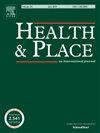Does the health of local populations modify occupational differences in employment rates of older workers? Findings from the ONS Longitudinal Study 2001–2011
IF 3.8
2区 医学
Q1 PUBLIC, ENVIRONMENTAL & OCCUPATIONAL HEALTH
引用次数: 0
Abstract
Poor health is a key reason for early exit from the labour market. Few studies have explored how the health of local populations is related to occupational differences in employment outcomes among older people. Our study used data for England and Wales from the ONS Longitudinal Study linked with 2001 Census measures of the health of the older working age population at local authority level. We included 128,710 people aged 40-64y in 2001 who were in paid work in the previous five years. We investigated the associations of both occupation and area level with two employment outcomes ten years later (in 2011): i) in paid work or not; ii) economic activity (employed (reference), unemployed, retired, sick/disabled, other). People in elementary occupations were more likely to not be in paid work in 2011 compared to those in managerial occupations (RRR 1·55 [95%CI 1·47,1·64]). Compared to the healthiest third of local authority areas, being resident in the unhealthiest third was associated with greater likelihood of not being in paid employment ten years later (RRR 1·25 [95% CI 1·18,1·33]). While area level health was associated with employment outcomes for all major occupation groups, the gap between the healthiest and unhealthiest areas was most marked for skilled trades; process, plant and machine operatives; and elementary occupations. Occupational differences for the economic activity outcome were most marked for the sick/disabled category. Policies to improve the health of local populations may support retention and reduce occupational inequalities in employment rates of older workers.
当地人口的健康状况是否会改变老年工人就业率的职业差异?国家统计局 2001-2011 年纵向研究的结果。
健康状况不佳是提早退出劳动力市场的一个重要原因。很少有研究探讨当地人口的健康状况与老年人就业结果的职业差异之间的关系。我们的研究使用了英格兰和威尔士国家统计局纵向研究中的数据,这些数据与 2001 年人口普查中地方当局一级老年劳动适龄人口的健康状况测量结果相联系。我们将 2001 年 40-64 岁、在过去五年中从事有偿工作的 128,710 人纳入研究范围。我们调查了职业和地区水平与十年后(2011 年)两种就业结果的关联:i)是否从事有偿工作;ii)经济活动(就业(参考)、失业、退休、生病/残疾、其他)。与从事管理职业的人相比,从事初级职业的人更有可能在 2011 年没有从事有偿工作(RRR 1-55 [95%CI 1-47,1-64])。与最健康的三分之一地方当局地区相比,居住在最不健康的三分之一地方当局地区的居民十年后不从事有偿工作的可能性更大(RRR 1-25 [95%CI 1-18,1-33])。虽然地区健康水平与所有主要职业类别的就业结果相关,但最健康地区与最不健康地区之间的差距在技术工种、加工、工厂和机械操作工以及初级职业方面最为明显。经济活动结果的职业差异在病人/残疾人类别中最为明显。改善当地人口健康状况的政策可能有助于留住老年工人,减少老年工人就业率方面的职业不平等。
本文章由计算机程序翻译,如有差异,请以英文原文为准。
求助全文
约1分钟内获得全文
求助全文
来源期刊

Health & Place
PUBLIC, ENVIRONMENTAL & OCCUPATIONAL HEALTH-
CiteScore
7.70
自引率
6.20%
发文量
176
审稿时长
29 days
期刊介绍:
he journal is an interdisciplinary journal dedicated to the study of all aspects of health and health care in which place or location matters.
 求助内容:
求助内容: 应助结果提醒方式:
应助结果提醒方式:


